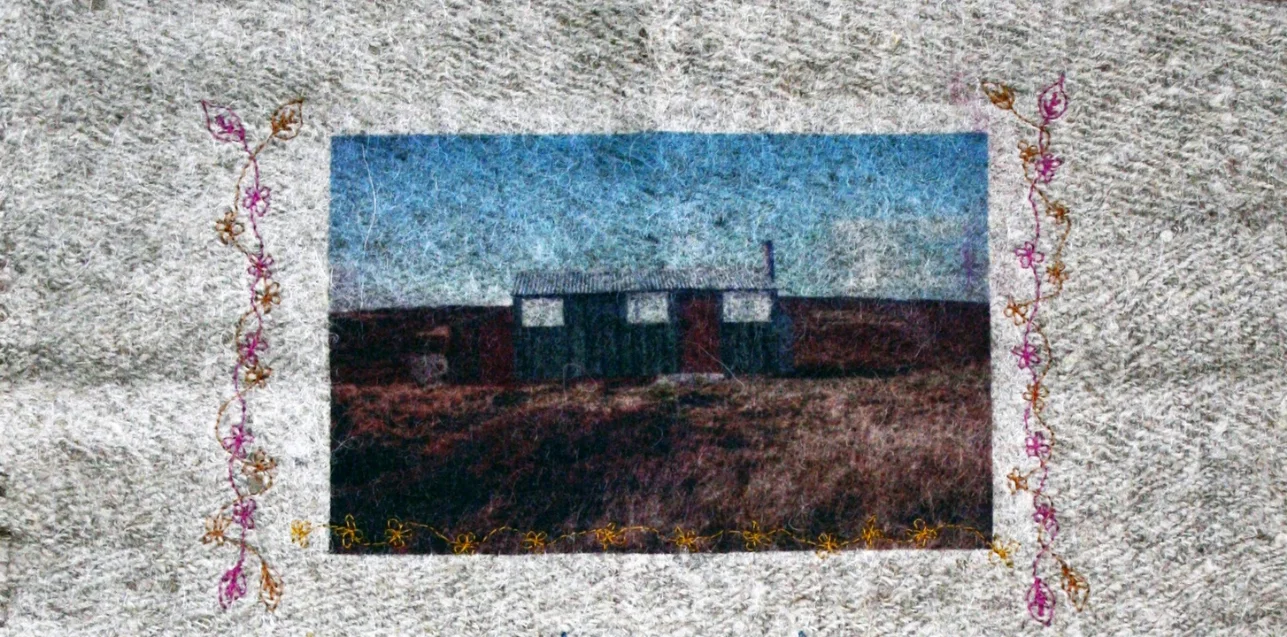‘Coisich a Rùin’ (‘Come on, my love’) by Alison MacLeod
Twilling Tweeds collaborated with Scottish Textile artist Alison Macleod to create a special edition textile using Chitrali Patti ( woolen cloth).
Alison is currently living in Lewis and runs her own textile studio ‘Tiger Textiles’.
Alison describing her textile:
‘On the Chitrali Patti panel, I have embroidered a Gaelic ‘Waulking Song’ using free hand machine embroidery. This basically means that I ‘write’ with the machine needle using a free motion. I also printed an image of a Lewis ‘sheiling’ and used threads of moorland colours to decorate the cloth.
The waulking song I chose, ‘Coisich a Rùin’ (‘Come on, my love’), is one of many that were traditionally sung by women while waulking the tweed. The waulking process is before my time, but this song was released by the Scottish band, Capercaille which makes it more relevant as it’s a song that I enjoy in it’s new life.
The ‘waulking’ process in making Harris Tweed was carried out by groups of women to cleanse the tweed eliminating oils, dirt and other impurities as well as thickening the cloth. The women sat in a group and pounded the cloth along a board with their hands whilst singing ‘Orain Luaidh’ (‘Waulking songs’). The result would be a thicker, softer, cleaner tweed.
The Waulking songs which have common themes of love, war, hunting and sewing are very rhythmic and composed to keep the beat as the cloth was being waulked.
I chose an image of a sheiling to print on the cloth as again, this is a symbol of island heritage and past tradition. Abandoned huts, named sheilings, are scattered throughout the moorlands of the Outer Hebrides. The moor is where families took their livestock for common grazing. The sheilings were used as temporary summer homes, mainly for women and children, who spent the summer months on the moor attending the cattle. The colours on the moor inspire me greatly, and I picked threads to reflect these colours.
I was fascinated by the Chitrali Patti and the similarities in the making process of Harris Tweed. Both cloths have such rich heritage and skill and live up to the saying ‘craft is knowledge’. As the Chitrali Patti is still being made in it’s traditional method, I think it fully reflects the Chitral culture with its rawness and strong smell. I wanted to combine this part of the Hebridean culture by adding the Gaelic waulking song and the sheiling image as I believed that this was an important part of the project. It was also interesting to combine more modern techniques such as machine embroidery and printing on to such a traditional ‘hand made’ cloth’.


